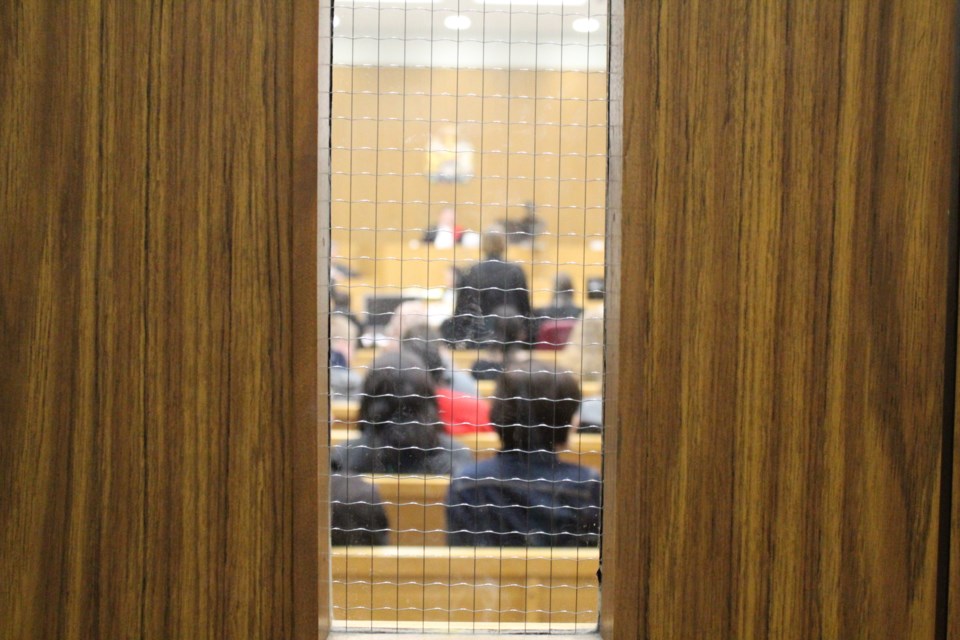Ontario Attorney General Doug Downey has said the provincial justice system advanced 25 years in 25 days as a result of the COVID-19 pandemic that so suddenly descended upon the world earlier this year.
A very large part of that modernization is the widespread introduction of virtual courts, allowing participants to safely distance but continue on with the business of justice.
Video feeds were previously used for court appearances for those detained in custody so those accused didn’t have to be escorted to courthouses for routine appearances and adjournments.
With a $1.3-million tech infusion introduced in the spring, Ontario’s courts and tribunals were able to expand on that, including through the addition of 600 teleconference lines for audio court hearings.
Dial-a-court is suddenly so common now that security seems to overwhelm the few members of the public who venture inside the Barrie courthouse for in-person hearings. Zoom video feeds are also being used.
I recently caught an Ontario Superior Court of Justice insolvency hearing over a live Facebook broadcast. Midway through, I glanced at the counter, which showed there were 336 viewers.
The ability to witness or even participate in a case over the phone or through a video feed can be amazingly convenient. Anyone not directly involved in the case is told to throw their phone on mute, unless they are asked to address the court directly. Double taskers then can therefore address their attention elsewhere until the case they’re waiting for comes up.
But there are glitches.
“We’re in a whole other time… this is foreign ground for everybody,” Justice Angela McLeod said during a recent Friday afternoon hearing in Courtroom 9, after two lawyers addressed each other during an open court session.
McLeod was trying to get through a list of cases before her with the spectre of having to give up the courtroom and related technology to a previously scheduled case before another judge. And that list of cases seemed impossibly long for her one-hour window.
So after reminding the lawyers that they weren’t on a regular phone call and that all comments should be directed to the court itself, she revealed her frustration.
“Someone was ordering waffle fries,” she said, referring to the morning session.
And just as she was explaining how she tried, desperately, to get them to put their phone on mute, the sound of a baby crying seemed to emerge in the background.
Other conversations have also interrupted virtual courts when participants failed to mute their phones. Annoying beeps coming at regular intervals suggests that some people put their phone on hold while the caller tends to other things.
And then there are the tech accidents.
One erstwhile defendant diligently called the court several times during the course of a recent morning session. A not-so-perfect connection meant that he wasn’t always able to stay on the line and he cut out, so he promptly called right back.
The problem is that all callers are instructed to identify themselves followed by the pound button, which prompts a beep. That identification and accompanying beep is then broadcast into the virtual court, alerting the participants of a new arrival — replacing the visual cue of when someone new walks into the courtroom. That identification is repeated when they end the call.
So the name of the accused, with that distinctive beep, was repeated so frequently that it prompted the Crown prosecutor to quip that she would likely be dreaming that person’s name in her sleep that night.
It’s been a bit of a learning curve, criminal lawyer Gary Pickard patiently explained. And although the lawyers and court staff who use the system regularly may have become well acquainted with the new process, just like the original court process, it is one that is meant to be open to any members of the public, many of whom including the accused, are likely entering the virtual court for the first time. The visual formalities are invisible, and sometimes the decorum that goes with it is, too.
And there’s bound to be interruptions.
“People just don’t understand that they’re in a courtroom when they’re sitting at home,” said Pickard, who heads up the Simcoe County Criminal Lawyers' Association. “There’s some wrinkles, but for the most part it’s worked quite well.”
And virtual courts are likely to adopt a more permanent role in the judicial landscape. The day of the jury cattle call when 200 people are summoned to the courthouse to form juries seem now to be part of another lifetime.
Although Ontario’s judicial system has yet to fully cross the bridge of the future of jury trials. There are discussions now about whether jury trials are even necessary for the civil system.
Marg. Bruineman covers the courts and justice issues for BarrieToday.



